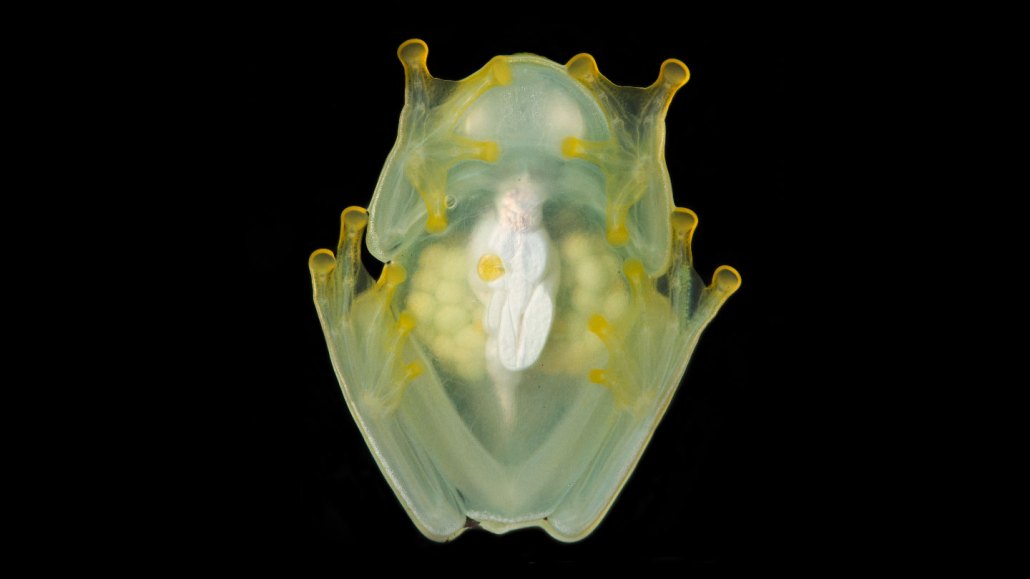
This sleeping female glass frog tucks away most of her red blood cells while she sleeps. Her eggs are visible within her transparent ovaries.
Jesse Delia

This sleeping female glass frog tucks away most of her red blood cells while she sleeps. Her eggs are visible within her transparent ovaries.
Jesse Delia